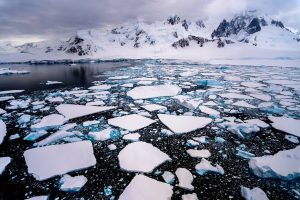
Effects of airborne particles. Particles in the air can be either liquid or solid and are usually categorized based on their size. They consist of aerosols, dust, pollen, ash, and soot. Human health may be harmed by airborne particles. For instance, through dust particles that enrich soils and the seas with nutrients, they can contribute significantly to ecosystems. The likelihood that a particle can cause health issues is closely correlated with its size.
EFFECTS OF AIRBORNE PARTICLES
The biggest issues arise from particles smaller than 10 micrometers in diameter since they can enter your lungs deeply and some of them may even enter your bloodstream. Both your heart and lungs may be impacted by exposure to such particles. Exposure to particle pollution has been connected in numerous scientific studies to a number of issues. The burning of fossil fuels and agricultural practices, which raise the concentration of airborne particles in the atmosphere, are two examples of human actions and environmental changes that might alter the concentration of airborne particles.
1. Fires, which degrade the quality of the air

EFFECTS OF AIRBORNE PARTICLES
Large-scale fires can be started accidentally, but they can also be started on purpose to clear land for farming and remove forests. • Wind, which affects the concentration and dispersion of airborne particles and has the ability to stir up dust. • Plant productivity as a result of pollen release.
2. Rain, which eliminates or dissolves airborne particulates

Volcanic eruptions, which emit gasses and particles into the atmosphere. Impacts from meteorites, which have the ability to release material into the atmosphere. The amount of sunlight that is absorbed or reflected from Earth’s atmosphere is one of the many processes and phenomena that are impacted by airborne particles. The Earth’s climate is cooled by particles that reflect or scatter sunlight, whereas it is warmed by particles that absorb it. • The way clouds develop. Clouds include water droplets that surround atmospheric particles. As a result, a high particle concentration may cause more water droplets, which will increase the amount of cloud cover.
3. A rise in the amount of ice and snow

Fossil fuel particles, for instance, are darker and absorb more sunlight than snow, which is white. As a result, the rate and extent of snow and ice melting are accelerated when these black particles fall on snow, raising surface temperatures. The health effects of regional air quality
Environmental damage
Wind has the ability to carry particles great distances before they settle on land or in water. The following are some possible effects of this settling, depending on their chemical makeup: • acidification of lakes and streams; • alteration of the nutrient balance in coastal waters and large river basins; • depletion of soil nutrients; • early death in individuals with heart or lung disease; • nonfatal heart attacks; • irregular heartbeat; • aggravated asthma; • reduced lung function;
More environmental damage;
• increased respiratory symptoms, such as coughing, difficulty breathing, or irritation of the airways. Due to their increased sensitivity or potential exposures, people with heart or lung conditions, children, older persons, members of minority groups, and those from lower socioeconomic backgrounds are more likely to be impacted by particle pollution exposure.
Summary
Particles that are raised in the air and have the potential to be harmful to human health, to be an annoyance are known as airborne particles. The size of airborne particles has a direct impact on their potential health impacts.